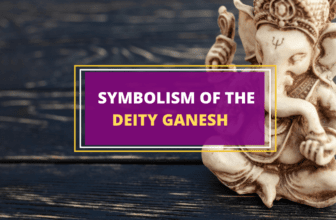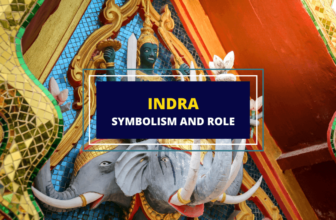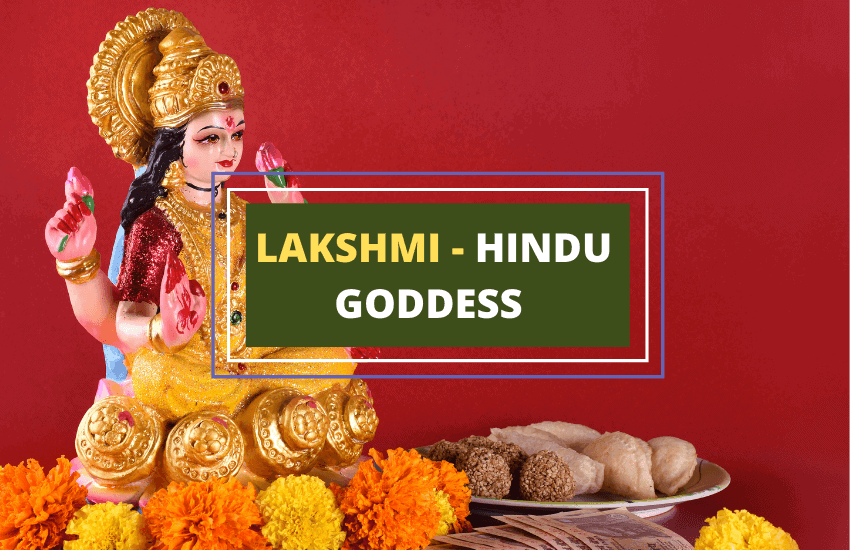
Table of Contents
Hinduism is known for being a polytheistic religion with many influential deities. Lakshmi is a primordial goddess in India, known for her role as a mother goddess and for her associations with wealth and material possessions. She’s a common figure in most Hindu homes and businesses. Here’s a closer look.
Who Was Lakshmi?
Lakshmi is the goddess of wealth and is one of the most worshipped deities of Hinduism. Apart from this, she has associations with fortune, power, luxury, purity, beauty, and fertility. Although she is known as Lakshmi, her sacred name is Shri (also Sri), which has different uses in India. Lakshmi is a mother goddess of Hinduism, and together with Parvati and Saraswati, she forms the Tridevi, the trinity of Hindu goddesses.
In most of her depictions, Lakshmi appears as a beautiful woman with four arms, sitting on a lotus flower and flanked by white elephants. Her portrayals show her wearing a red dress and gold ornaments, which symbolize wealth.
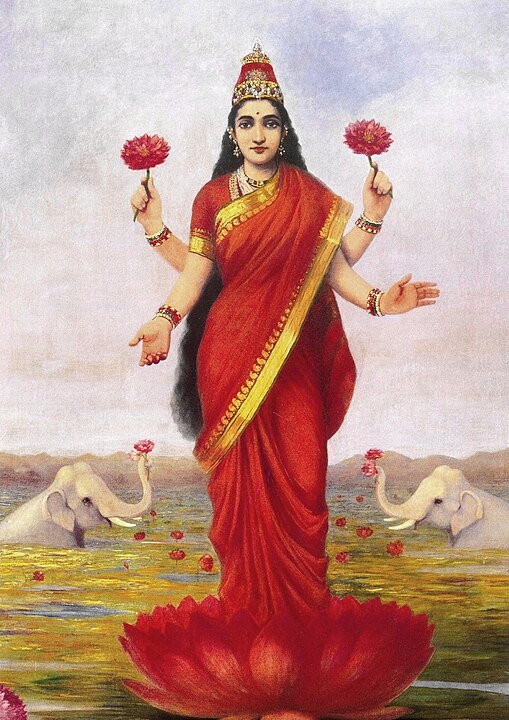
Images of Lakshmi are present in most Hindu homes and businesses for her to offer her providence. Since she was the goddess of material fulfillment, people prayed and invoked her to receive her favor.
Lakshmi’s name comes from the concept of auspiciousness and good luck, and it also relates to power and wealth. The words Lakshmi and Shri stand for the traits that the goddess represents.
Lakshmi is also known by many other epithets, including Padma (She of the lotus), Kamala (She of the lotus), Sri (radiance, wealth and splendor) and Nandika (She who gives pleasure). Some other names for Lakshmi are Aishwarya, Anumati, Apara, Nandini, Nimeshika, Purnima and Rukmini, many of which are common names for girls in Asia.
History of Lakshmi
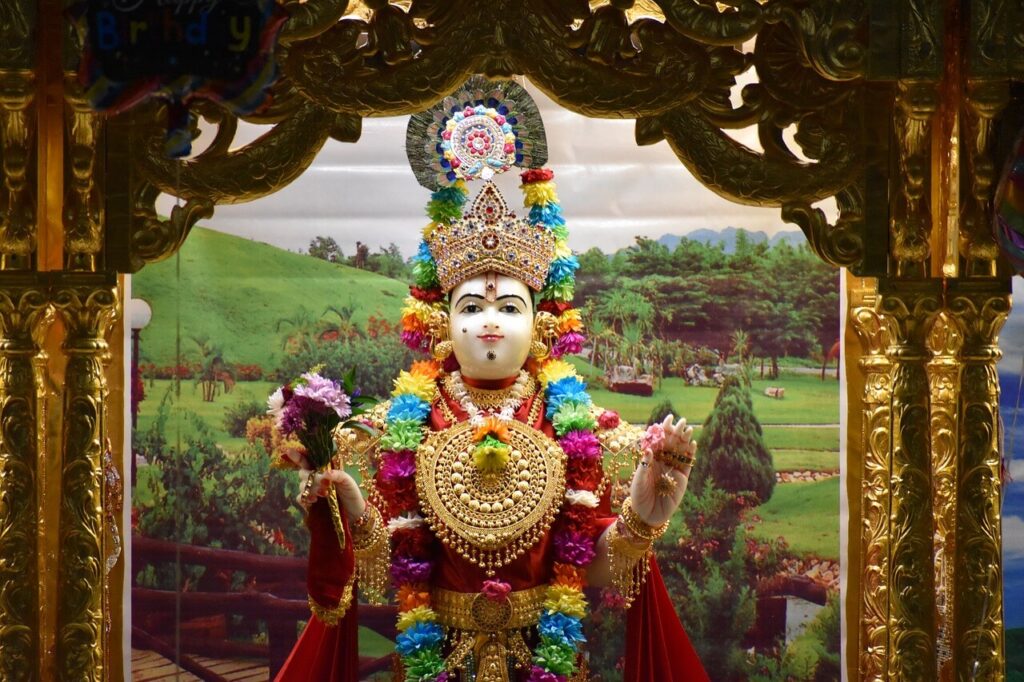
Lakshmi first appeared in the sacred Hindu texts between 1000 BC and 500 BC. Her first hymn, the Shri Shukta, appeared in the Rig Veda. This scripture is one of the oldest and most adored in Hinduism. From then onwards, her worship acquired strength in different religious branches of Hinduism. Some sources claim that her adoration might have even preceded her role in Vedic, Buddhist, and Jain worship.
Her most famous myths appeared around 300 BC and AD 300 in the Ramayana and the Mahabharat. In this period, the Vedic deities gained popularity and were introduced in common worship.
How Was Lakshmi Born?
The Churning of the Ocean of Milk is a significant event in Hinduism since it is part of the ever-lasting struggle between the gods and the evil forces. The gods churned the ocean of milk for 1000 years until treasures started emerging from it. Some sources state that Lakshmi originated in this event, being born from a lotus flower. With the presence of Lakshmi, the gods of Hinduism had good fortune and could defeat the demons that were ravaging the land.
Who is Lakshmi’s Husband?
Lakshmi has a fundamental role as Vishnu’s wife. Since he was the god of creation and destruction, Lakshmi had different associations in connection with her husband. Every time Vishnu descended to earth, he had a new avatar or representation. In this sense, Lakshmi also had a myriad of forms to accompany her husband on earth. According to some sources, Lakshmi helps Vishnu to create, maintain, and destroy the universe.
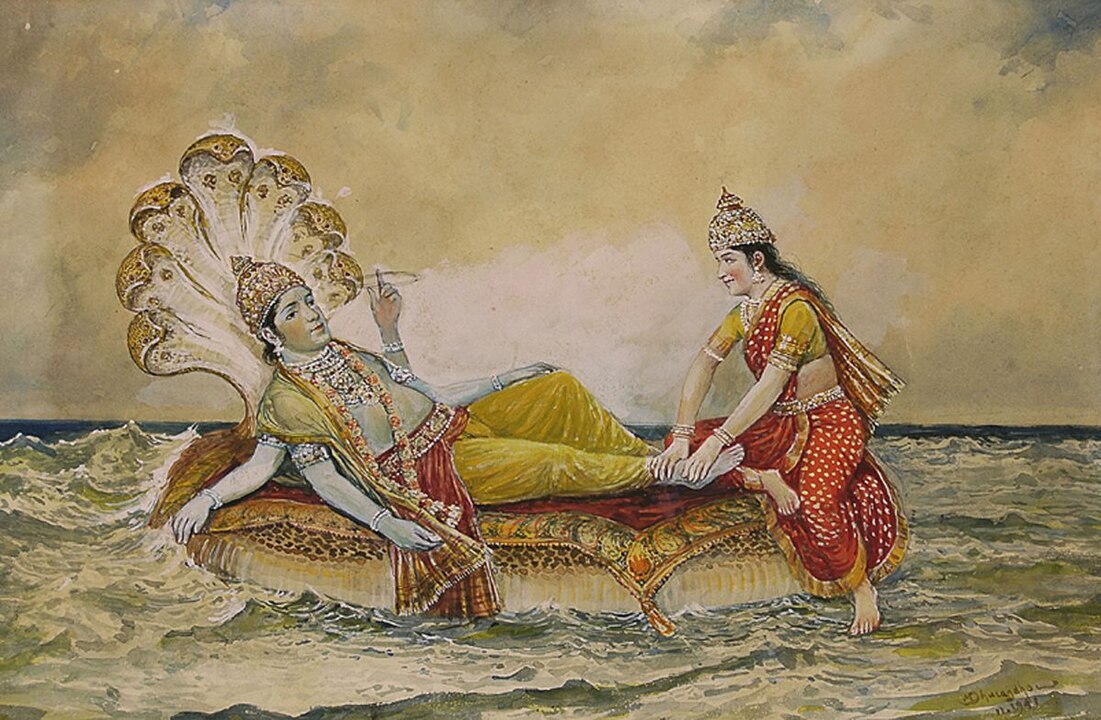
What is Lakshmi’s Domain?
Hinduism believes that Lakshmi has to do with a broad spectrum of fields. However, in most of them, she represents well-being, material goods, and also material success on earth. In some accounts, Lakshmi came to the world to provide humans with food, clothing, and all accommodations for a comfortable life. Apart from that, she also offered positive things of the intangible realm like beauty, wisdom, strength, will, luck, and splendor.
What Are the Uses of Her Sacred Name?
Shri is the sacred name of Lakshmi and is an important aspect of Hindu culture for its holiness. Since Vedic times, Shri has been a sacred word of abundance and auspiciousness. People used this word before talking to the gods or a person in a position of power. This word represents almost all the things that Lakshmi herself does.
Married men and women receive the title of Shriman and Shrimati, respectively. These names represent the blessing of Lakshmi to fulfill life with material contentment, to help society develop, and to maintain a family. Men and women who have not yet married are not addressed with these terms since they are still in the process of becoming husbands and wives.
Symbolism of Lakshmi
Lakshmi enjoyed a rich symbolism due to her role in daily life. Her portrayals are profound with meaning.
1. Lakshmi’s Four Arms
Lakshmi’s four arms symbolize the four goals humans have to pursue in life, according to Hinduism. These four goals are:
- Dharma: the pursuit of ethical and moral life.
- Artha: the pursuit of wealth and means of life.
- Kama: the pursuit of love and emotional fulfillment.
- Moksha: the accomplishment of self-knowledge and liberation.
2. The Lotus Flower
Apart from this representation, the lotus flower is one of Lakshmi’s principal symbols and has a valuable meaning. In Hinduism, the lotus flower symbolizes fortune, realization, purity, prosperity, and overcoming difficult circumstances. The lotus flower grows in a dirty and swampy place and yet manages to become a beautiful plant. Hinduism extrapolated this idea to show how complicated scenarios can also lead to beauty and prosperity.
3. Elephants and Water
The elephants in Lakshmi’s depictions are a symbol of work, strength, and effort. The water in which they bathe in her artworks can also symbolize abundance, prosperity, and fertility. All in all, Lakshmi represented wealth and fortune in most of her depictions and myths. She was a goddess of the positive side of life, and she was also a dedicated mother for this religion.
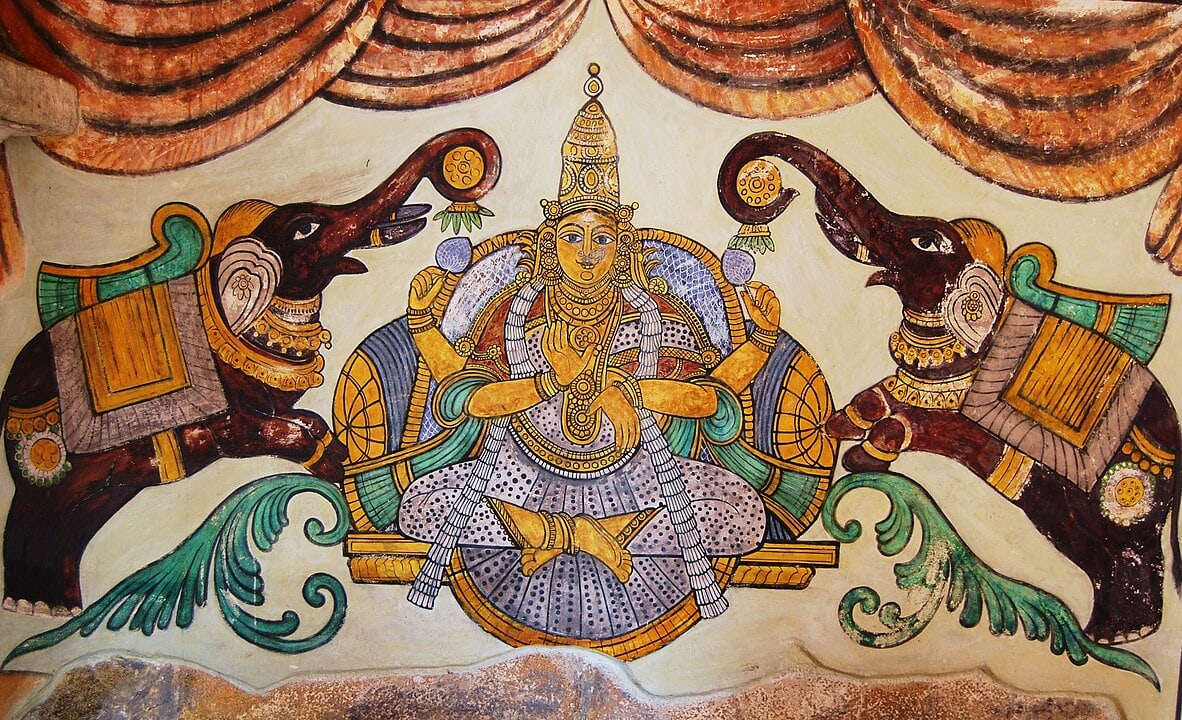
Lakshmi’s Worship
Hindus believe that the ungreedy worship of Lakshmi can lead to material wealth and fortune. However, freeing one’s heart from all desire is no easy task. Lakshmi dwells in places where people work hard and virtuously. Yet, when these traits disappear, so does she.
Lakshmi is currently a major goddess of Hinduism since people worship her for well-being and success. People celebrate her at Diwali, a religious festival celebrated in honor of the battle between the goddess Rama, and the demon Ravana. Lakshmi appears in this story and is, therefore, part of the festival.
Lakshmi has her main worship and adoration on Friday. People believe that Friday is the most auspicious day of the week, so they worship Lakshmi on this day. Apart from that, there are several celebration days throughout the year.
In Brief
Lakshmi is a central goddess of Hinduism and is one of the oldest deities of this religion. Her role as Vishnu’s wife earned her a place among the mother goddesses of this culture and gave her a more diversified domain. Human longing for material fulfillment is always present, and in this sense, Lakshmi remains a praised goddess in current times.




